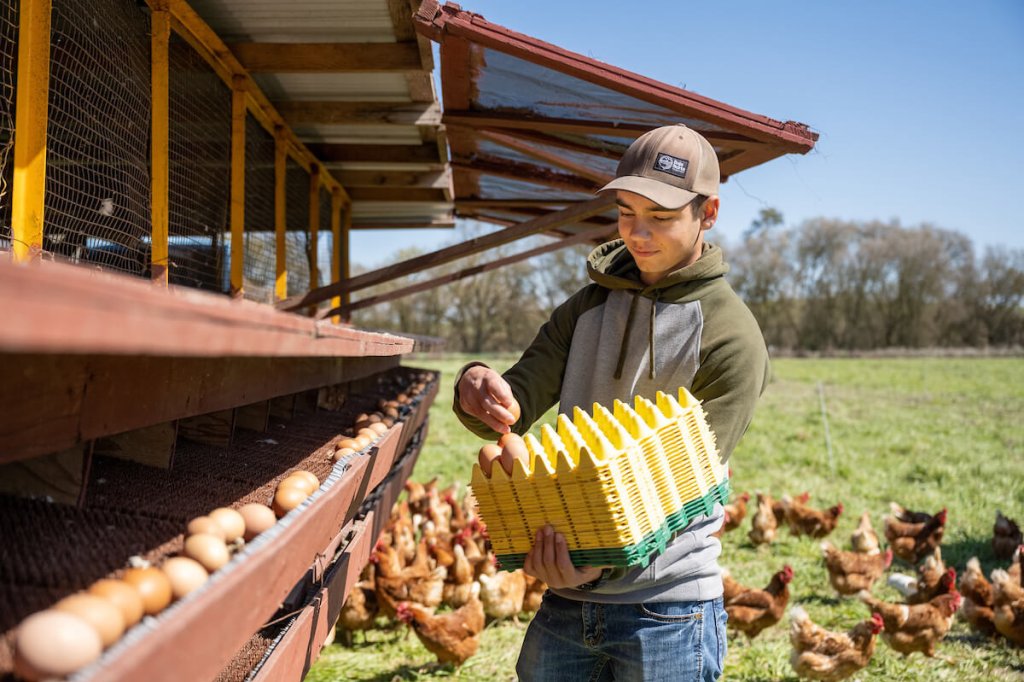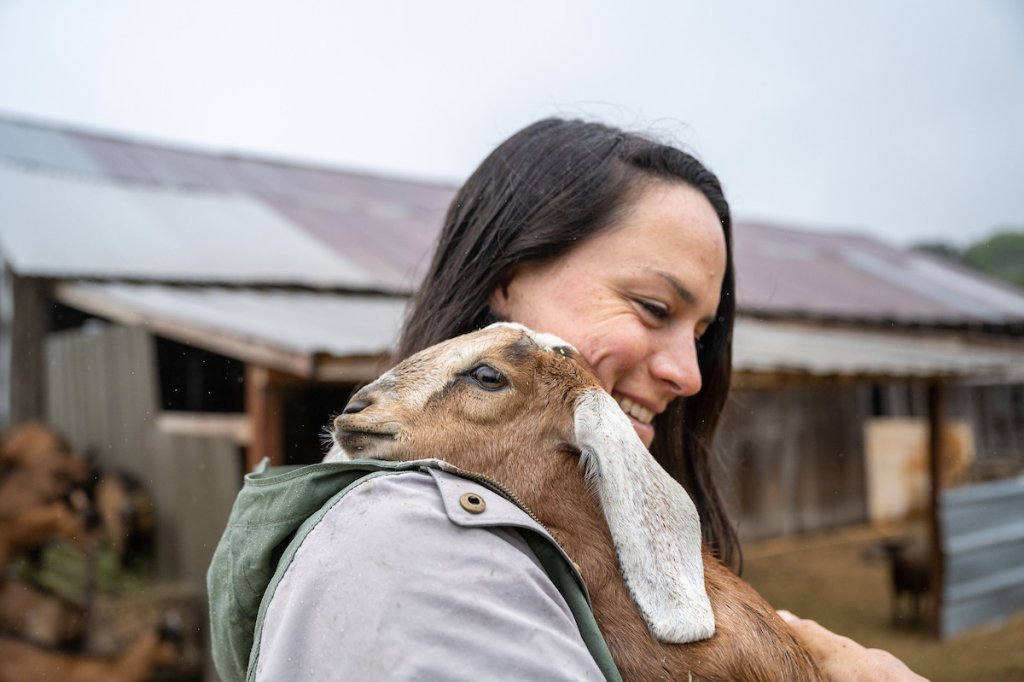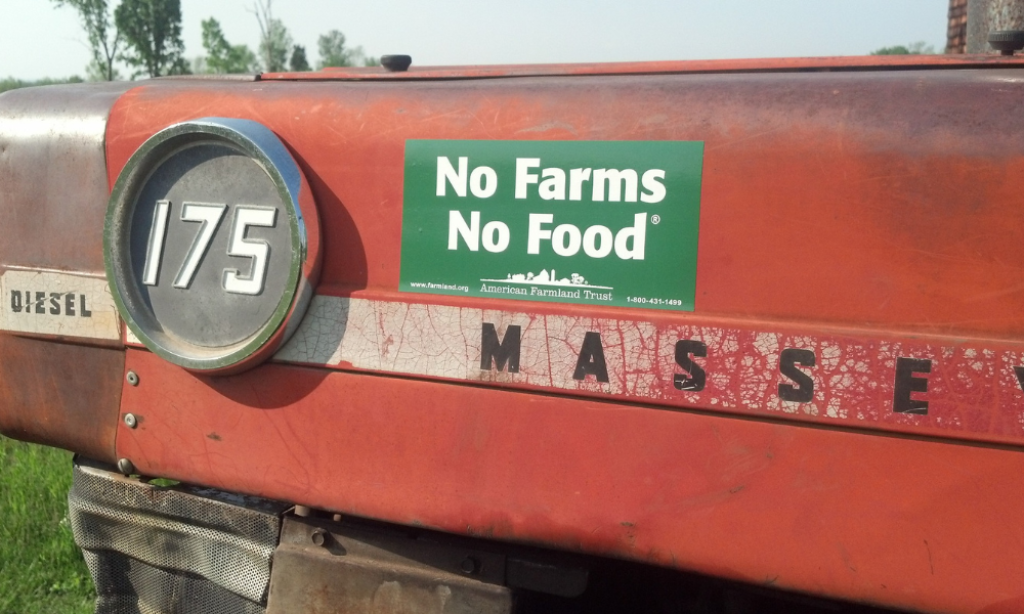A Peek at Potential Soil Health System Performance in the Next 50 Years of Climate Change in Four US Cropping Systems
This week, AFT posted its final Resilience Report, completing a series of four reports: Illinois corn and soybeans, western New York forage crops, California almonds, and California wine grapes. With climate change intensifying every year, the costs and benefits of adopting soil health management systems are likely to change with time. However, field trials of soil health management systems from the recent past are unable to demonstrate how crops and practices will perform in the future climate. So, AFT partnered with the USDA Agricultural Research Service and Regrow to use a computer-based model to simulate cropping systems with and without soil health management systems from 2022 to 2072 using climate projections*. The group also used satellite imagery to explore how common soil health practices are in New York and Illinois cropping systems and how quickly they are changing over time. Here, we provide a brief summary of each report, starting in the east with New York and moving west.
In New York, we focused on western New York forage cropping systems supporting dairies. This region includes the Genesee River watershed, where AFT leads the Genesee River Demonstration Farm Network. We used a model (DeNitrification DeComposition or DNDC) to simulate corn grain, corn silage, and corn-soybean rotation systems with four management systems: conventional till and no cover crop, conventional till with a rye cover crop, no-till and no cover crop, and no-till with a rye cover crop. Looking at crop yields from 2022-2072, the no-till systems tended be more resilient under future climate conditions compared to crop yields with conventional till and stacking a rye cover crop onto no-till further improved crop yield resilience.
The model also allowed us to look at nitrate loss below the rooting zone in New York. Adding the rye cover crop to conventional till reduced nitrate loss by 20% on average across the three cropping systems. Stacking the rye cover with no-till reduced nitrate loss by 36% on average. In dollars and cents, we can use the average price of nitrogen (N) fertilizer in 2023, which was $0.60 per lb of N, to estimate how much money is lost to nitrate leaching. According to the model, an 80-acre field of corn grain in a corn-soybean system with conventional tillage and no cover crop would leach, on average, about 5,800 pounds of nitrogen per year, which is about $3,500 in fertilizer costs down the drain. In contrast, the same field stacking no-till and a rye cover would retain 25% more nitrogen and have a 14% greater crop yield on average.
In New York, the simulations suggested that the rye cover crop increased the soil organic carbon sequestration rate by about 70% compared to systems without a cover crop. No-till had a smaller, but still significant, positive effect on soil organic carbon gains as well.
In Illinois, we used the model to look at corn grain – soybean rotation with the same four management systems (tillage – cover crop combinations) as New York. We found that corn systems with the rye cover and no-till had about 10% greater yields on average in the future climate than corn grown with conventional tillage and no cover crop. We also compared different N fertilizer programs (fall and spring applications totaling 170 lb N per acre per year, two spring applications totaling 170 lb N per acre per year, and two spring applications totaling 220 lb N per acre per year). The corn-soybean systems with two spring applications had more resilient crop yields than the fall and spring applications, and the spring application totaling 170 lb performed just as well as the 220 lb program.
Looking at nitrate losses in Illinois, adding the rye cover crop to conventional tillage reduced nitrate losses by about 50%. Stacking rye cover with no-till reduced nitrate losses by another 10%. The fall and spring applications totaling 170 lb N per acre per year and the spring applications totaling 220 lb N per acre per year showed similar nitrate losses below the rooting zone (around 60 lb N per acre per year). The spring applications totaling 170 lb N per acre had significantly less nitrate loss across all four tillage-cover crop combinations. Altogether, an 80-acre corn-soybean field with no cover crop, conventional tillage, and two spring applications totaling 220 lb N per acre will, according to the model, would leach about 5,700 lb N, which is about $3,400 per year down the drain. But the same field with a rye cover, no-till, and two spring applications totaling 170 lb N per acre would leach only about a quarter as much nitrogen and have a 12% greater crop yield on average.
In Illinois, the rye cover crop increased the soil organic carbon sequestration rate more than 2.5 times the annual rate of the systems without cover crops. No-till also increased soil organic carbon sequestration rates slightly compared to conventional till. In Illinois, we were also able to use the model to look at how soil health practices perform for soil erosion protection by looking at predicted sediment loss in the future climate. According to the model, no-till reduced erosion by 40% compared to conventional tillage without a cover crop. Stacking the cover crop with no-till reduced sediment loss by another 30%. We also looked at sediment loss by type of summer weather (drought, normal, wet, etc.). We found that no-till and cover crops dramatically reduced soil erosion even in abnormally wet and moderately wet years, i.e., increased soil resilience to extremely wet weather.
Moving west to California almonds, we pushed the model beyond its normal use, which is for annual crops. Almonds, grown on trees (and grapes, below, grown on vines) presented new challenges for the model. So, we are reporting fewer outcomes than those shown for New York and Illinois above; that is, we’re providing only the outcomes for which we have the most confidence—changes in soil organic carbon and sediment loss. We used the model to simulate almond orchards with conventional tillage and no-till, as well as a triticale cover crop, a fava bean cover crop, or no cover crop (bare ground). We found that almonds grown without a cover crop lost some soil organic carbon every year with both tillage types. Almonds grown with triticale cover sequestered about 0.25 tonnes of CO2e per acre per year, and almonds with fava bean cover sequestered over twice as much, on average, in a likely future climate. The simulations suggest that fava beans stacked with no-till sequestered 14% more soil organic carbon than fava beans with conventional tillage. Many almond producers use a mix of grasses and legumes, which we were unable to model at this time. These systems likely perform somewhere in between the triticale and fava bean cover results.
Regarding erosion protection in California almond orchards, triticale reduced sediment loss, on average, by 17%, and fava bean cover reduced sediment loss by 61% compared to almonds with no cover crop. Even in a moderately wet spring (a March to May period totaling 2-7 inches of precipitation), fava bean still reduced sediment loss by 53% compared to no cover, i.e., increased soil resilience to extremely wet weather.
The fourth and final system we reported on is California vineyards. Similar to almond orchards, we simulated vineyards with conventional tillage and no-till, and a barley cover, a fava bean cover, or no cover (bare ground). According to the model, grapes grown with barley cover had soil organic carbon sequestration rates 4x the rate at which soil organic carbon was lost by the grapes with no cover. Grapes grown with fava bean cover had sequestration rates 8x the rate at which soil organic carbon was lost by the grapes with no cover. Stacking no-till with the cover crops slightly increased the soil organic carbon sequestration rates.
Looking at erosion, California vineyards with a barley or fava bean cover crop reduced sediment loss by 72% on average. Tillage did not have a strong effect on sediment loss, according to the model. The cover crop erosion protection benefit increases when we compare results by type of spring weather. In a moderately wet spring (precipitation in the 80-90 percentile range), wine grape systems with barley or fava bean cover, compared to no cover, still reduced sediment loss by 60%. This suggests that when future weather conditions get more challenging (especially wet), cover crops will be critical tools for building and maintaining soil function and, therefore, soil resilience.
In conclusion, two trends were apparent across the four cropping systems we modeled: 1) stacking cover crops and no-till often had additive effects, providing an even greater benefit than either practice alone; 2) resilience benefits from these two soil health practices can persist, or even increase, in extremely wet weather. In the New York and Illinois reports, we also provide practice adoption information. The key takeaways for both states are that 1) cover crop adoption is still low (<10%) and slow (increasing by 0.5 to 1 acre for every 100 acres per year) and 2) in both states, no-till adoption is declining, while both reduced and conventional tillage are increasing. The four reports and a technical note are available at https://farmlandinfo.org/publications/resilience-reports/.
Today farmers have many opportunities to more rapidly adopt soil health practices to build resilience now for extreme weather events on the horizon. Technical and financial assistance opportunities for adoption of these practices are available from two Partnerships for Climate Smart Commodities projects involving AFT (one for commodity crop producers and one for beef producers), your local NRCS field office, and the Farmland Information Center.
*We used the Localized Constructed Analogs Coupled Model Intercomparison Project phase 5 (LOCA-CMIP5) climate projections of the representative concentration pathway (RCP) 6.0. More technical details are available in our technical note.




